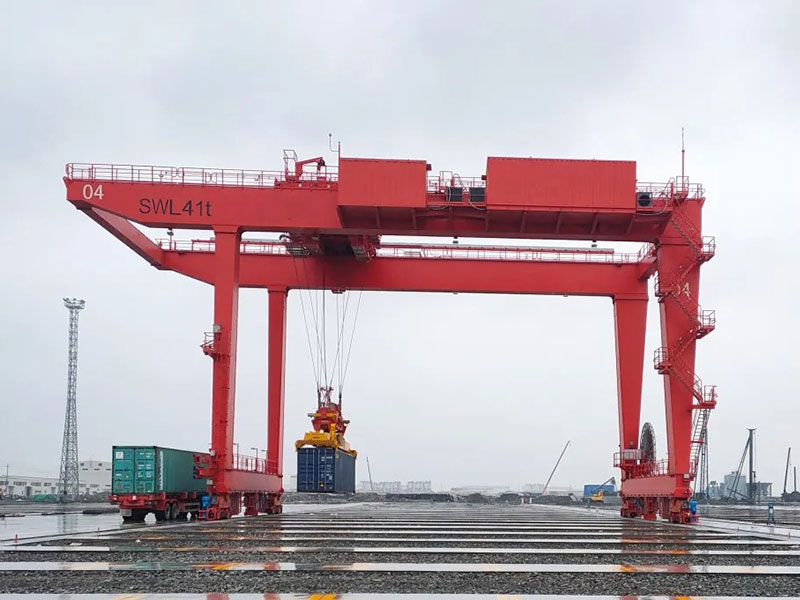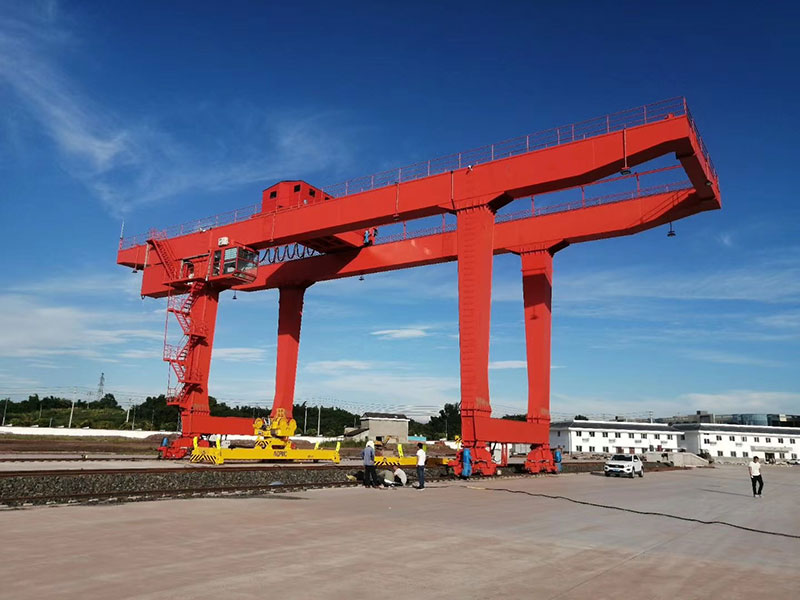Railway gantry cranes are essential equipment in railway yards and maintenance facilities, enabling the efficient handling and positioning of heavy loads such as locomotives, railway cars, and maintenance equipment. To ensure safe and effective operation, it is crucial for operators to have a comprehensive understanding of railway gantry crane operation methods. In this article, we will delve into the key aspects of railway gantry crane operation, exploring various techniques and best practices to master this critical task.

Pre-Operational Checks
Before initiating any railway gantry crane operation, conducting thorough pre-operational checks is paramount. Operators should inspect the crane and its components, ensuring that all mechanical, electrical, and hydraulic systems are in proper working order. Verify the condition of rails, wheels, brakes, cables, and hoisting mechanisms, looking for any signs of wear, damage, or malfunctions. It is crucial to address any issues before proceeding with crane operation.
Safety Precautions
Safety is of utmost importance in railway gantry crane operation. Adhere to the following safety precautions to protect personnel and prevent accidents:
a. Personal Protective Equipment (PPE): Operators should always wear the appropriate PPE, including hard hats, safety goggles, gloves, and high-visibility clothing. PPE ensures protection against potential hazards in the working environment.
b. Communication and Signaling: Establish clear communication protocols between the container handling gantry crane operator, ground personnel, and other operators in the vicinity. Use standardized hand signals or radio communication to relay instructions and ensure everyone is aware of the crane’s movements.
c. Load Capacity and Balance: Determine the weight and center of gravity of the load to be lifted. Ensure that the load falls within the crane’s specified load capacity and that it is properly balanced and secured to prevent any instability during lifting and movement.
d. Restricted Areas: Identify and mark restricted areas around the crane to prevent unauthorized personnel from entering dangerous zones. Maintain a safe distance from the crane during operation and avoid standing under loads.

Operating Techniques
Efficient operation of a railway gantry crane requires skilled techniques and precise control. Consider the following techniques:
a. Smooth Start and Stop: Gradually accelerate and decelerate the crane’s movements to minimize stress on the equipment and the load. Avoid sudden starts or stops, as they can cause excessive swinging or tipping of the load.
b. Positioning and Alignment: Use the controls to accurately position and align the crane with the load. Take into account the lifting points, ensuring they align with the crane’s hooks or attachments. Maintain proper alignment throughout the lifting and movement process.
c. Load Lifting and Lowering: Use smooth and controlled movements when lifting and lowering loads. Avoid sudden changes in speed or direction to prevent load swinging or shock loading. Maintain a clear line of sight to ensure precise placement of the load.
d. Obstacle Avoidance: Be vigilant for obstacles, both overhead and on the ground. Carefully maneuver the crane to avoid collisions with structures, equipment, or personnel. Constantly assess the working area for any potential hazards and adjust crane movements accordingly.
Regular Maintenance
To ensure the optimal performance and longevity of the railway rail mounted gantry crane, regular maintenance is essential. Implement a scheduled maintenance program that includes inspections, lubrication, and component replacements as recommended by the manufacturer. Addressing maintenance requirements promptly minimizes the risk of breakdowns and extends the crane’s operational life.
Conclusion
Mastering the operation of a railway gantry crane is a crucial skill for efficient and safe handling of heavy loads in railway yards and maintenance facilities. By following the recommended operation methods, adhering to safety precautions, employing precise techniques, and prioritizing regular maintenance, operators can ensure smooth and controlled movements, reducing the risk of accidents and maximizing productivity. With proper training and practice, operators can become proficient in railway gantry crane operation, contributing to the overall efficiency and safety of railway operations.
